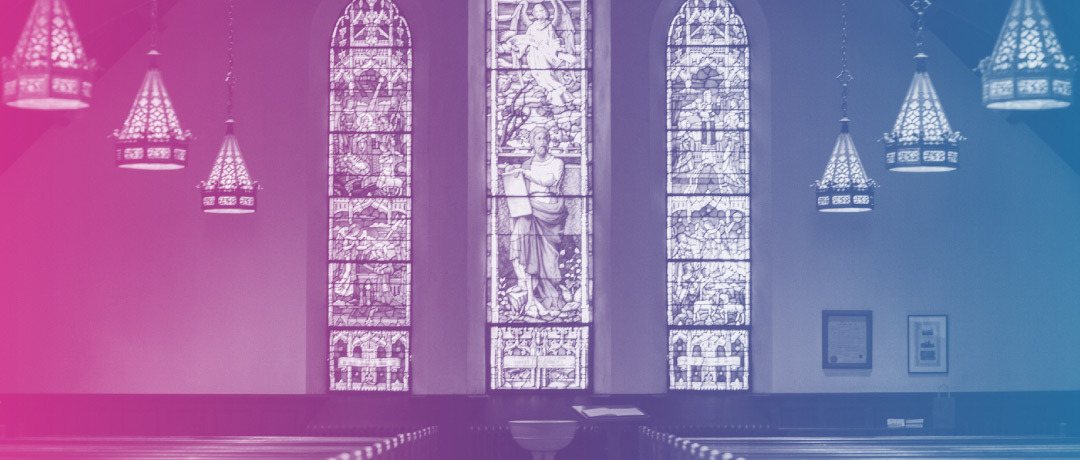Blog | Refreshing the Sanctuary: Blending Tradition with Modern Worship

Refreshing the Sanctuary: Blending Tradition with Modern Worship
For churches with older or more traditional sanctuaries, the challenge of transitioning into a space that supports modern worship can feel daunting. High ceilings, pews, stained glass, and pipe organs were built for a different era—but that doesn’t mean they’re obsolete. In fact, there’s incredible beauty and spiritual weight in worshiping where generations have encountered God.
The goal isn’t to erase the past. It’s to breathe new life into a sacred space. A thoughtful renovation can honor the soul of your sanctuary while making it function for how your church gathers today.
Start with Vision, Not Just Aesthetics
Before picking out paint colors or tearing down walls, begin by asking: What do we want this space to do? What kind of worship experiences are we creating? A sanctuary refresh should be guided by ministry needs, not just modern design trends.
Whether your services are liturgical, contemporary, or blended, make decisions that serve your people and reflect your mission—not just what’s “in style.”
Honor the Architecture
Traditional sanctuaries often carry symbolic beauty: wooden beams that lift the eye upward, stained glass that tells a story, craftsmanship that speaks of reverence. You don’t have to strip all that away to modernize your space. In fact, retaining some of those classic features can make your space feel rooted, not dated.
Consider highlighting, rather than hiding, key architectural elements. Update the lighting to better showcase wood, stone, or glass details. Let the character of the room set the tone, even as you adapt its function.
Integrate Technology with Subtlety
Modern worship often requires screens, lighting systems, and sound reinforcement. The key is to integrate these upgrades in a way that feels intentional—not invasive. Hide cables and mounts. Use wall-mounted or retractable screens that disappear when not in use. Choose lighting that complements the atmosphere rather than competing with it.
Remember: good tech disappears into the experience. It supports the message and the music without drawing attention to itself.
Reimagine the Platform, Not Just the Stage
In many older churches, the stage—or “chancel”—was designed for choirs and pulpits, not bands and worship leaders. You don’t have to remove everything to modernize. Consider lowering or expanding the platform to allow more flexibility. Use modular risers or staging pieces to create multi-purpose layouts without compromising the original design.
If a large pulpit dominates the space, consider relocating it or using a moveable lectern to create openness while preserving tradition.
Soften the Sound
Traditional sanctuaries were often built for unamplified speech and choral music—meaning reverb can be beautiful for hymns but challenging for drums or amplified vocals. Acoustic treatment (like wall panels or ceiling clouds) can help balance clarity without deadening the room.
A well-mixed sound system can make your traditional space feel intimate and dynamic—even with modern instrumentation.
Blend the Old and the New
Design choices don’t have to be either/or. A grand piano and a synth can share the same stage. Wooden pews can pair with LED lighting. A classic cross can stand beside a projection screen. The beauty is in the tension. It tells a story: that your church honors where it’s been while embracing where God is leading next.
Keep the Soul, Update the Space
Your sanctuary may not need to be overhauled—just thoughtfully refreshed. Fresh paint, new carpet, better lighting, and updated tech can go a long way. But through it all, guard the soul of the space. Let it feel sacred, not staged. Let it reflect your identity as a church, not someone else’s brand.
As Psalm 90:1 reminds us, “Lord, you have been our dwelling place throughout all generations.” The building isn’t the dwelling—He is. But the space matters. When done well, it becomes a vessel that points people to the presence of God, past and present.

About the Author
Josh Tarp is a multi-instrumentalist, singer-songwriter, and worship leader from Minneapolis with over 15 years of experience in church & worship leadership. Josh serves as the Director of Marketing at Motion Worship, helping to write various blog posts, managing social media, designing graphics, and handling customer service.
